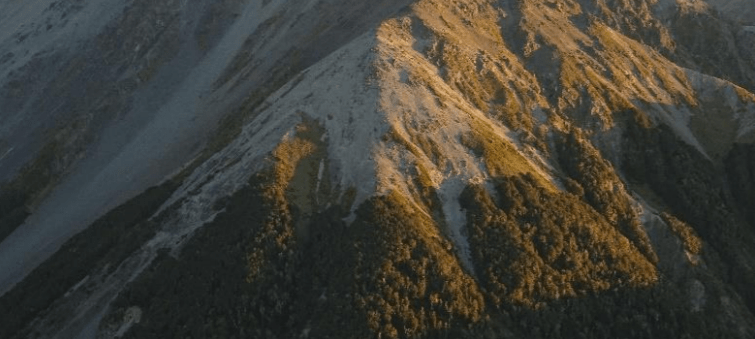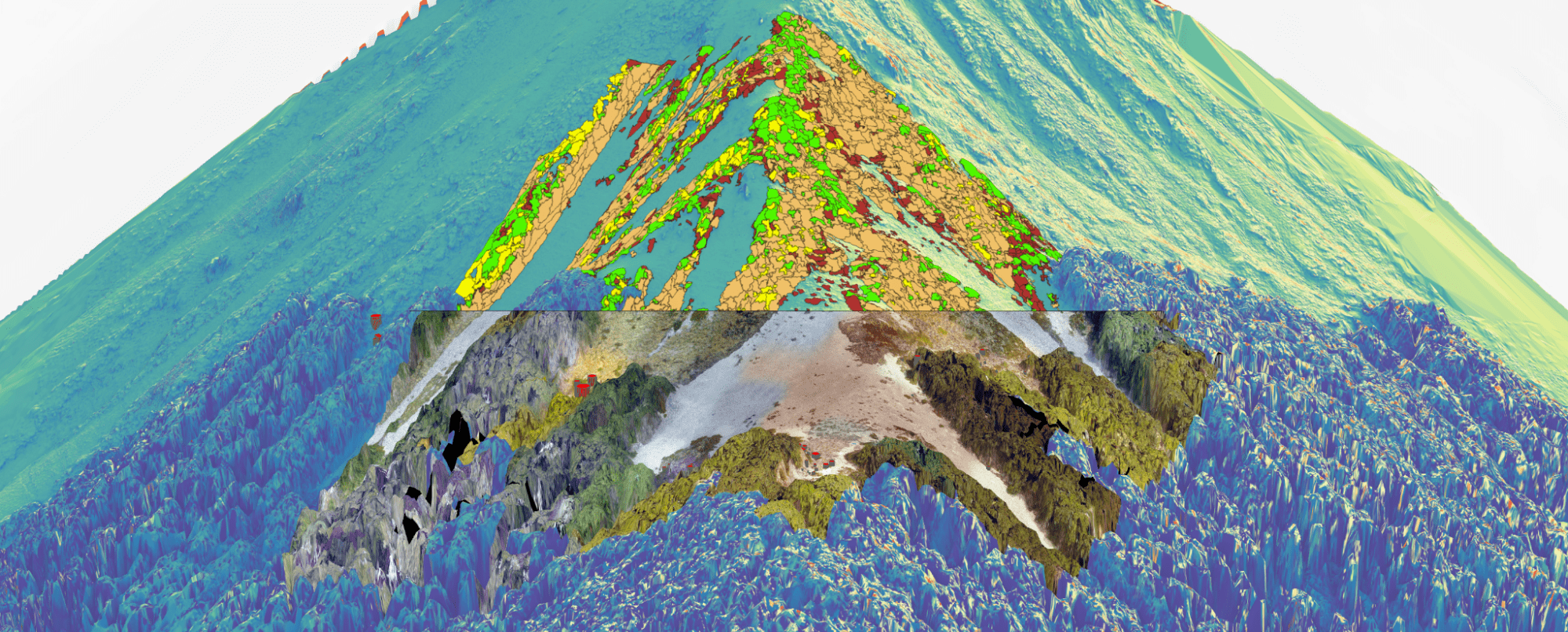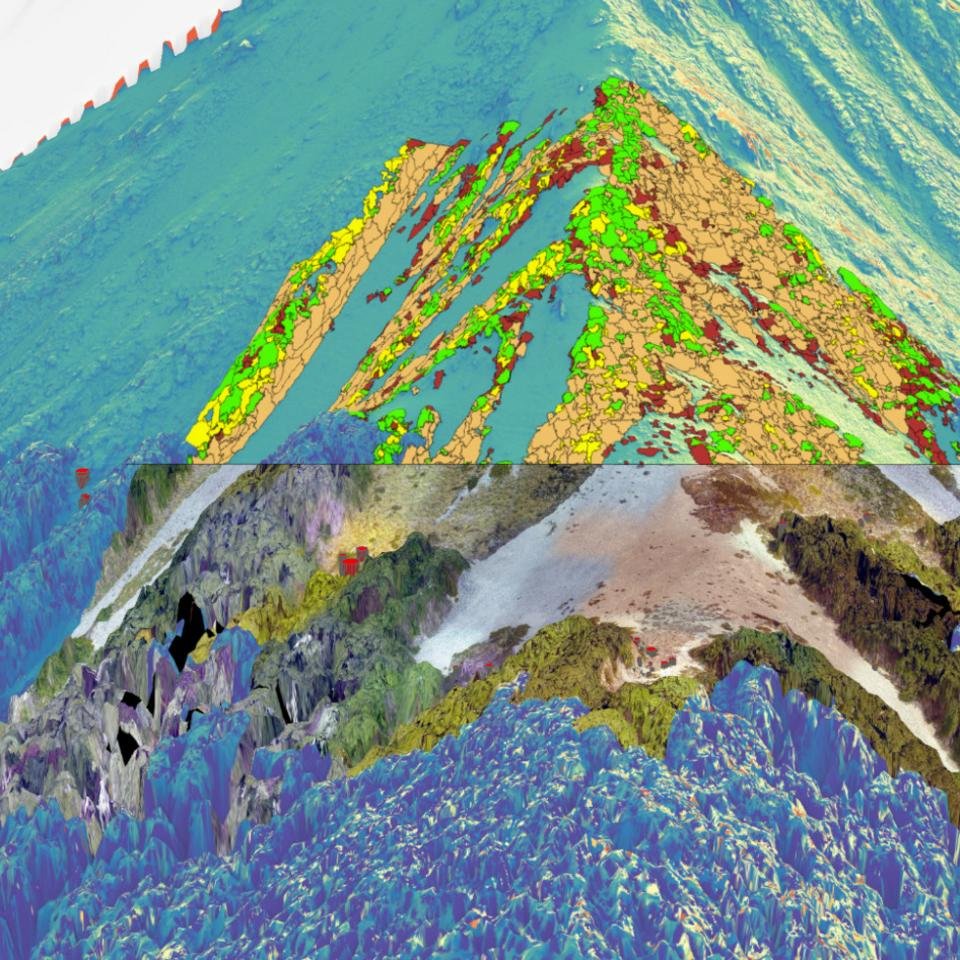How much longer will New Zealand’s abrupt treelines hold out against global warming?
Abrupt treelines are a rare and intriguing phenomenon. Typically, as trees gradually approach their physiological limitations they decline in stature and number. But sometimes environmental factors cause a bottleneck, bringing the treeline to a sudden stop, making a sharp border between two ecosystems. New Zealand’s southern beech forest is one example of this rare phenomenon.
“The weirdest stuff is happening up there,” says Dragonfly team member, ecologist and geospatial analyst Fabian Döweler. Fabian investigated the abrupt treelines of Mt Craigieburn and Mt Faust, both located northwest of Christchurch, as part of his PhD thesis. His goal was to understand why abrupt treelines occur and use his findings to predict the future impacts of climatic change.

Fabian used a custom drone setup with multiple sensors to create a 3D rendering of his research site, mapping and characterising the vegetation, thermal environment and topography. Fabian’s model is unique, as it combines long-term treeline monitoring studies with high resolution geospatial datasets. “These data sets are strongly under-utilised when not presented in a spatial context”, Fabian points out.
Conducting the field research was no easy task. Fabian would work for up to 15 hours a day, making 31 trips in total. Not only did he have to contend with thieving kea once he had reached his research sites, but also the temperamental weather of the Southern Alps. His custom drone had an aversion to wind and near cloudless skies were required to ensure the subalpine vegetation was mapped adequately.
By building upon treeline measurements established in 1990 and re-measured every decade, Fabian was able to establish that the treeline had more or less stayed put for the last 30 years. Most trees at the site had their height recorded 12 years ago, and had hardly developed since. “One seedling only grew from 7 cm to 9 cm”.

Previously, it was thought the bottleneck causing the abrupt treeline was light mediated, but Fabian’s research established that light alone could not be the cause. Fabian speculates the bottleneck is caused by infrequent summer frosts, which would see seedlings outside the treeline exposed to, and killed by, amplified solar radiation.
Fabian’s research suggests that an eventual change in climate is likely to result in the sudden removal of the bottleneck, causing rapid treeline advancement. “I modelled different climate warming scenarios. As the chance of summer frosts diminishes, the treeline invades the subalpine environment that is unique to native alpine tussocks, flowers, shrubs and kea”.
Read more about Fabian or see his PhD thesis.


